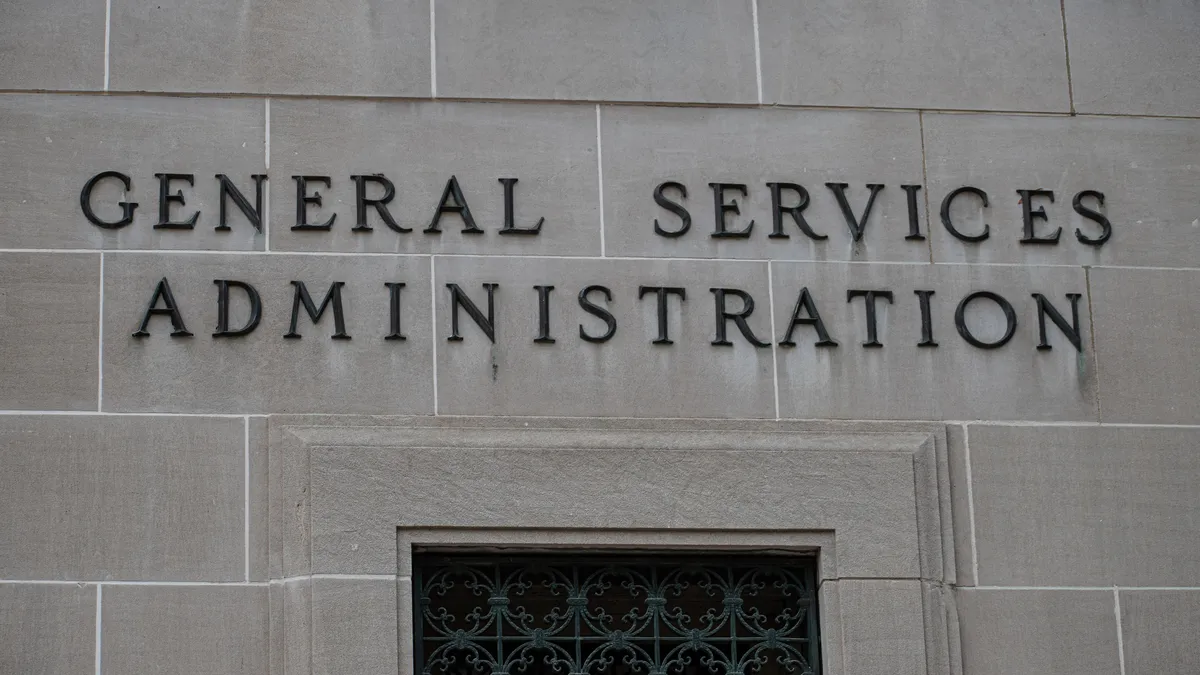Dive Brief:
- The General Services Administration will invest $30 million from the Inflation Reduction Act to increase the sustainability of federal buildings by testing new technologies and products, the administration announced last month.
- Robin Carnahan, GSA administrator, announced the funding during remarks at the American Institute of Architects’ annual conference in San Francisco. Carnahan said that the program is “turning federal buildings into testbeds for clean energy innovation,” in the release.
- GSA, in collaboration with the Department of Energy, will test the technologies in conjunction with private industry partners through its Green Proving Ground program. Some of the products being studied include an energy management platform from COI Energy, low-embodied-carbon concrete from Biomason, aerosol-based duct sealing from Aeroseal, vacuum-insulated glazing from Pilkington and operationally focused carbon management from Cambio AI and nZero.
Dive Insight:
Established in 2011, the GPG program evaluates emerging and sustainable technologies in real world settings and will help to accelerate the agency’s efforts to achieve net-zero emissions in federal buildings, according to the GSA. The agency acts as the federal government’s landlord, and owns and leases over 363 million square feet of space in 8,397 buildings in more than 2,200 communities nationwide.
This year, the GPG program has selected 20 emerging and sustainable technologies for evaluation in GSA’s real estate portfolio, a four-fold increase over previous years.
This year's GPG program focuses on seven technology areas:
- Electric vehicle supply equipment technologies.
- Germicidal ultraviolet technologies.
- Greenhouse gas accounting technologies.
- Grid-interactive efficient buildings.
- High-performance technologies.
- On-site renewables.
- Window retrofit technologies.
The federal government’s priorities are lining up with private sector demand, as renewable construction techniques become more commonplace. Mass timber, renewable concrete and other building materials are becoming increasingly common as features of large office and other buildings, such as Amazon’s HQ2, which opened on June 15.











